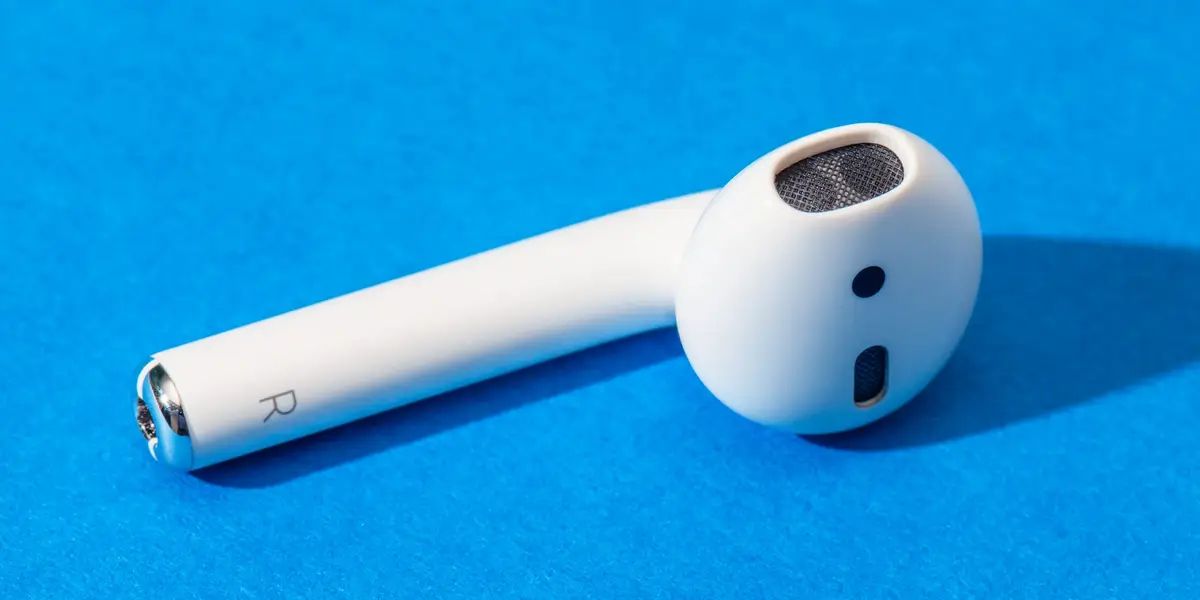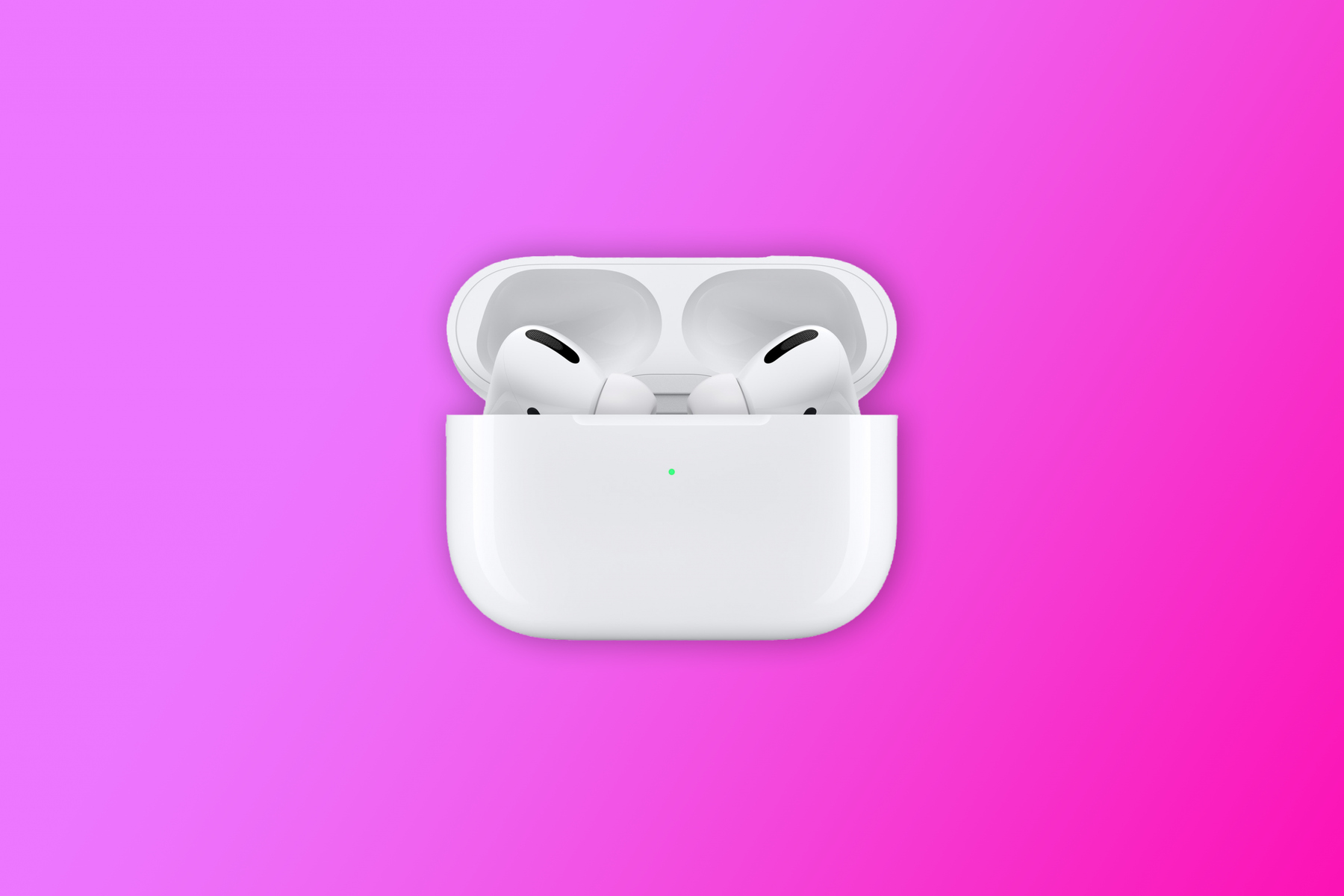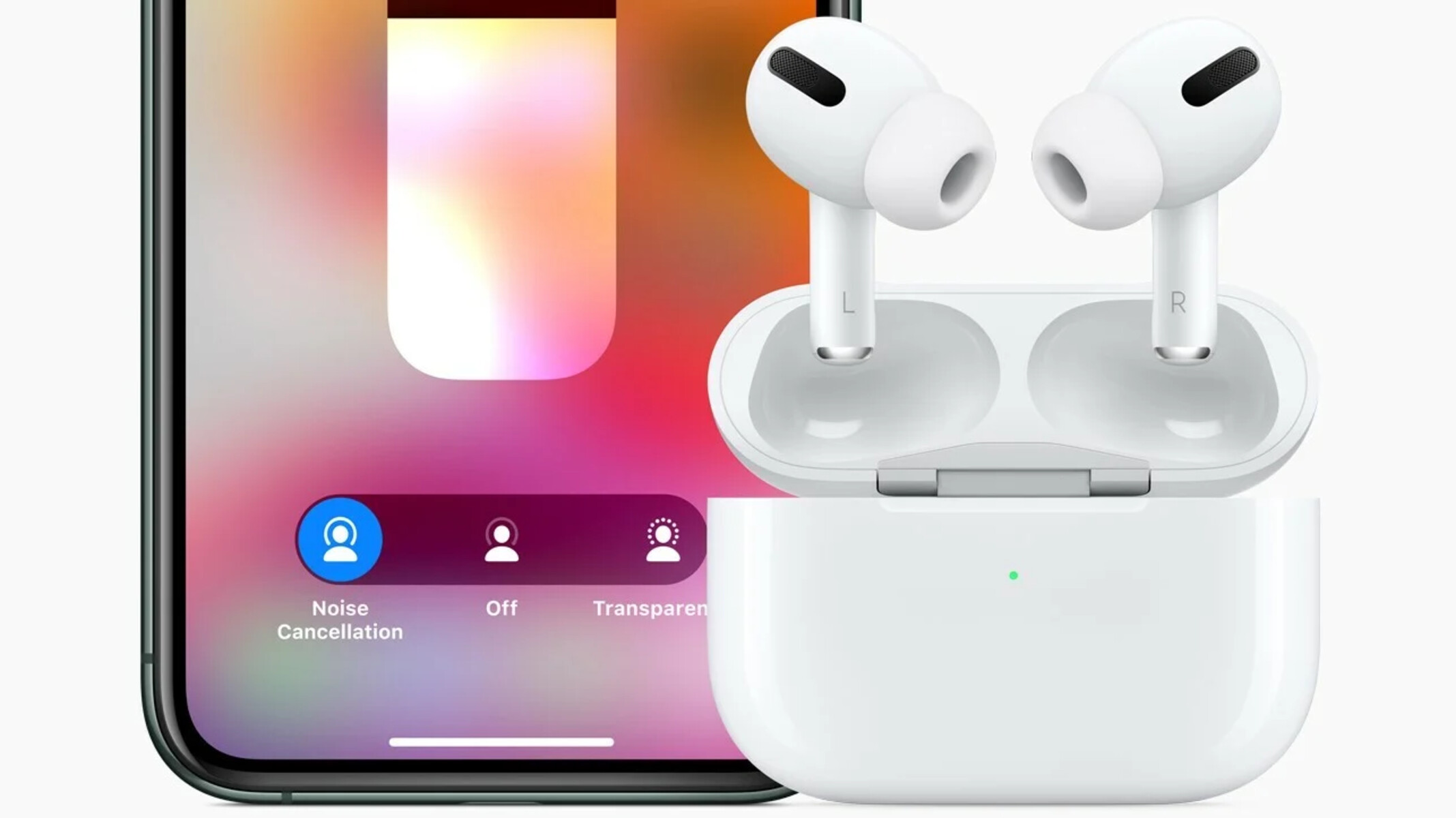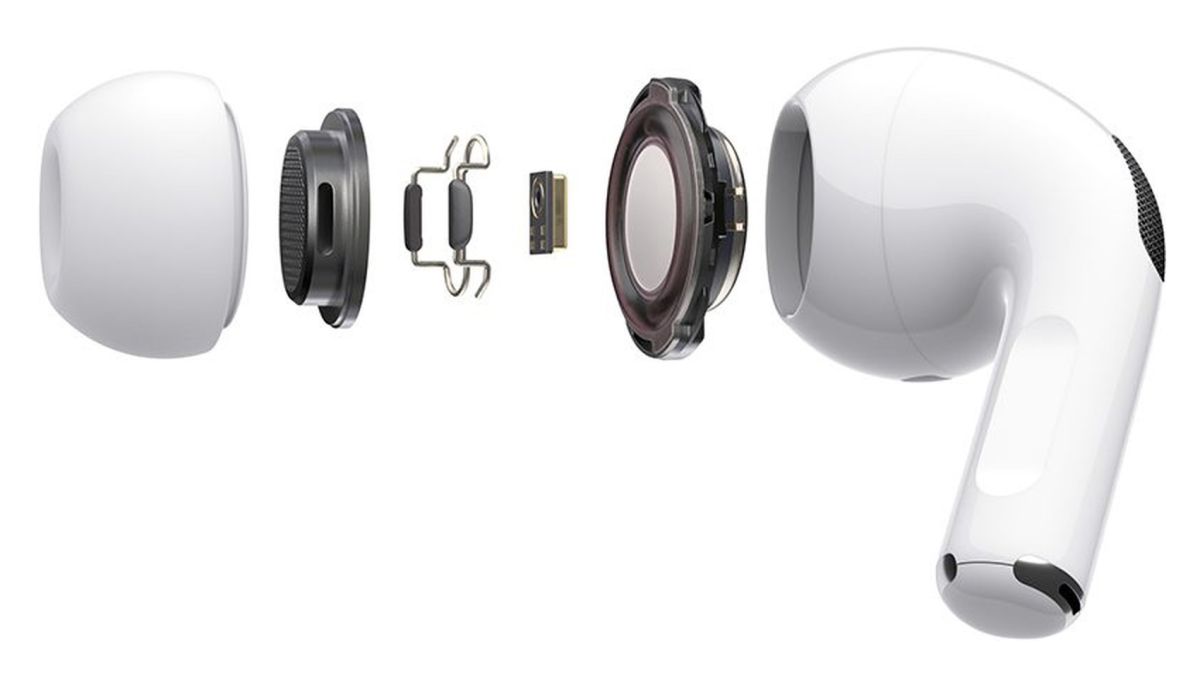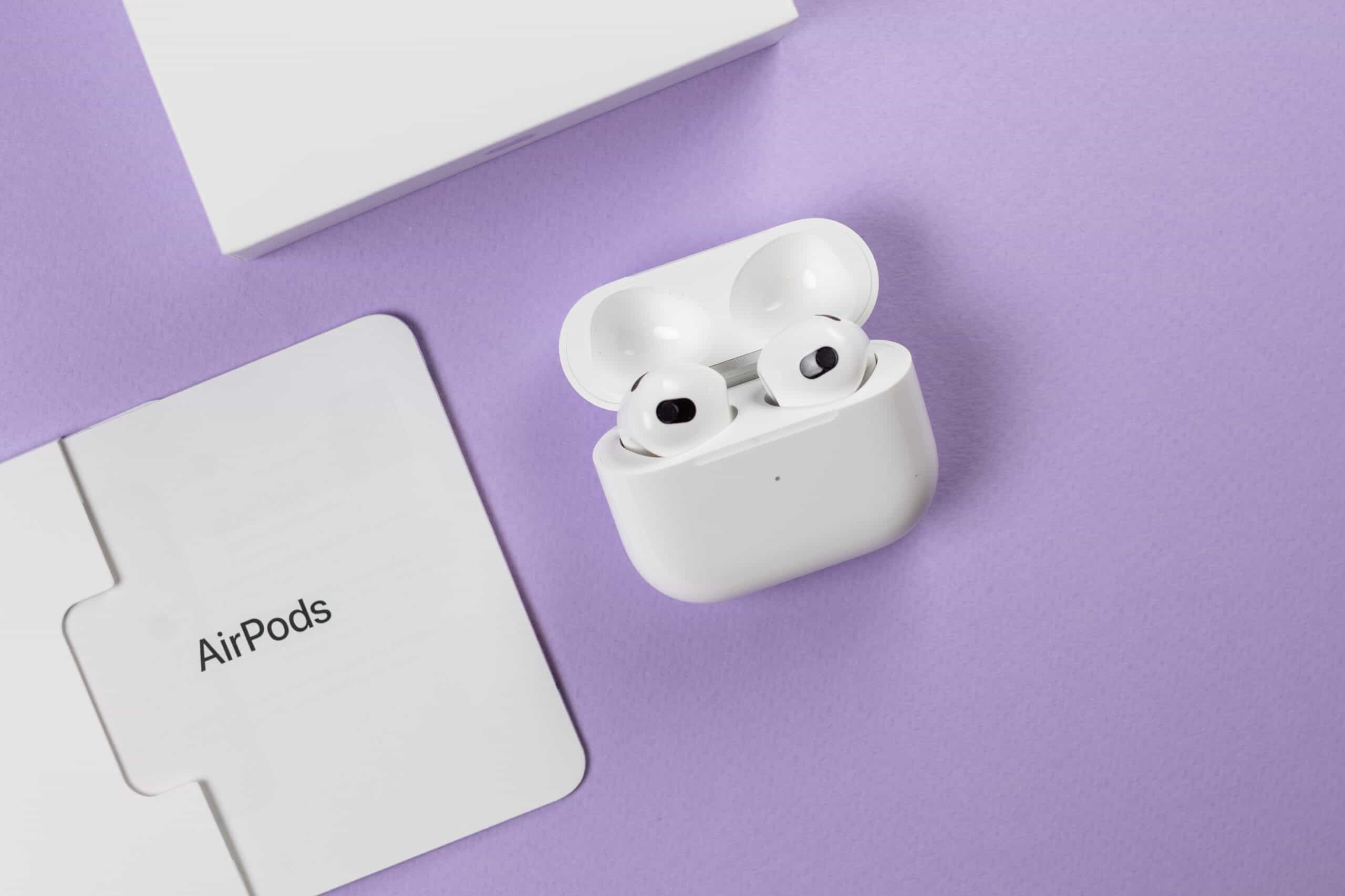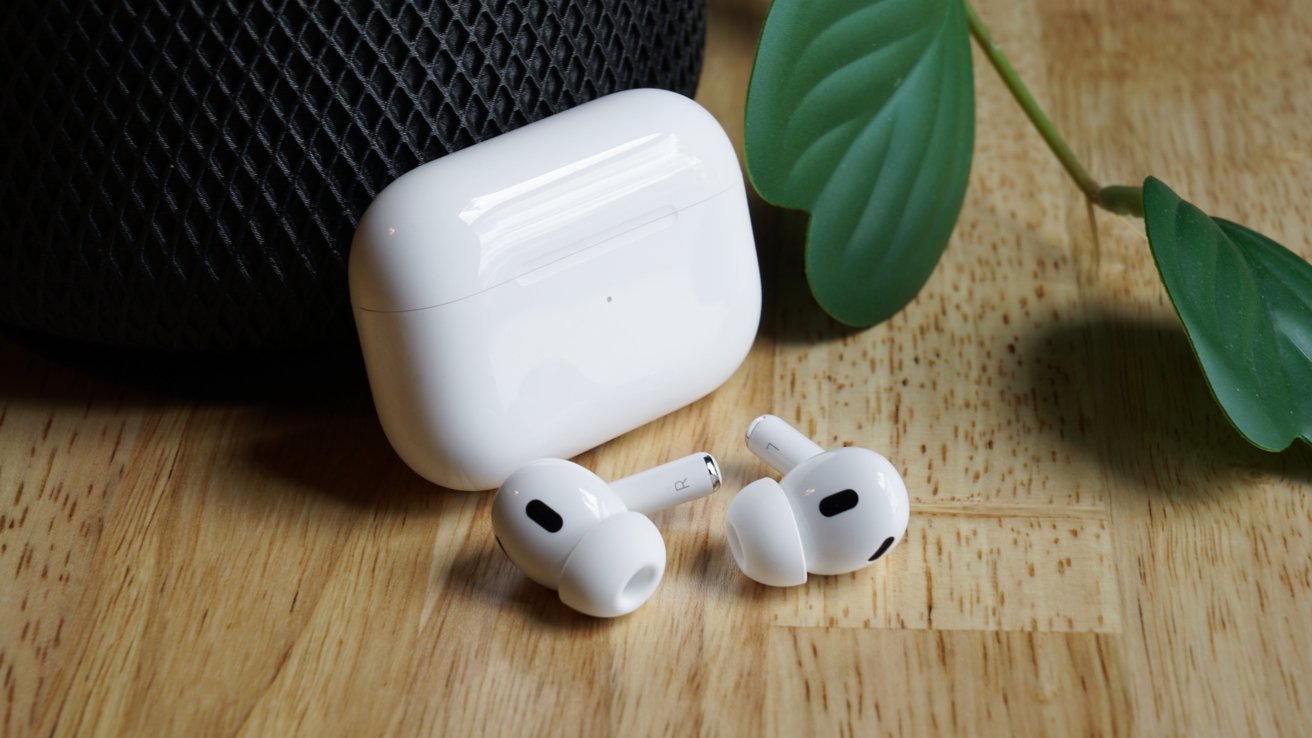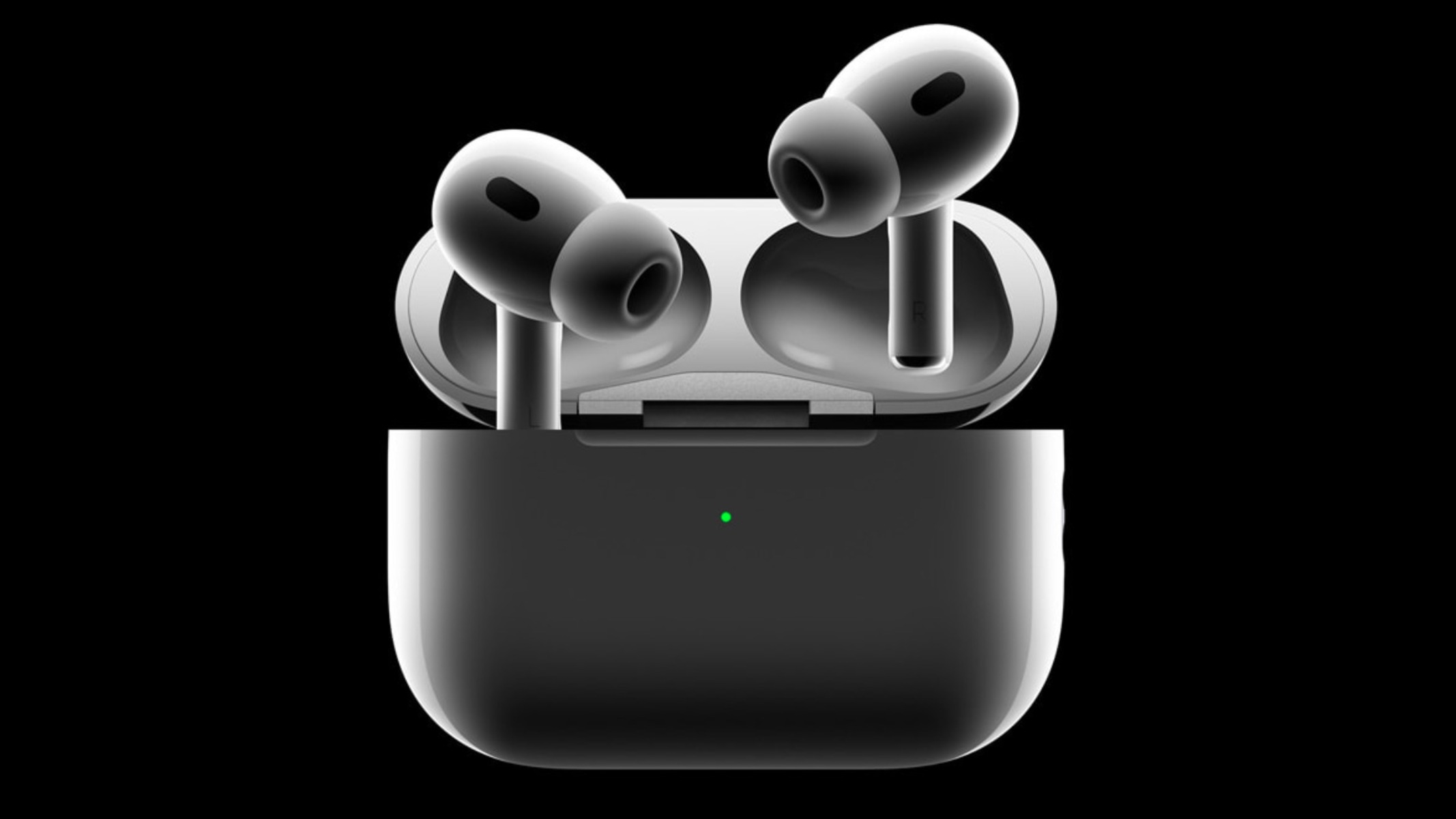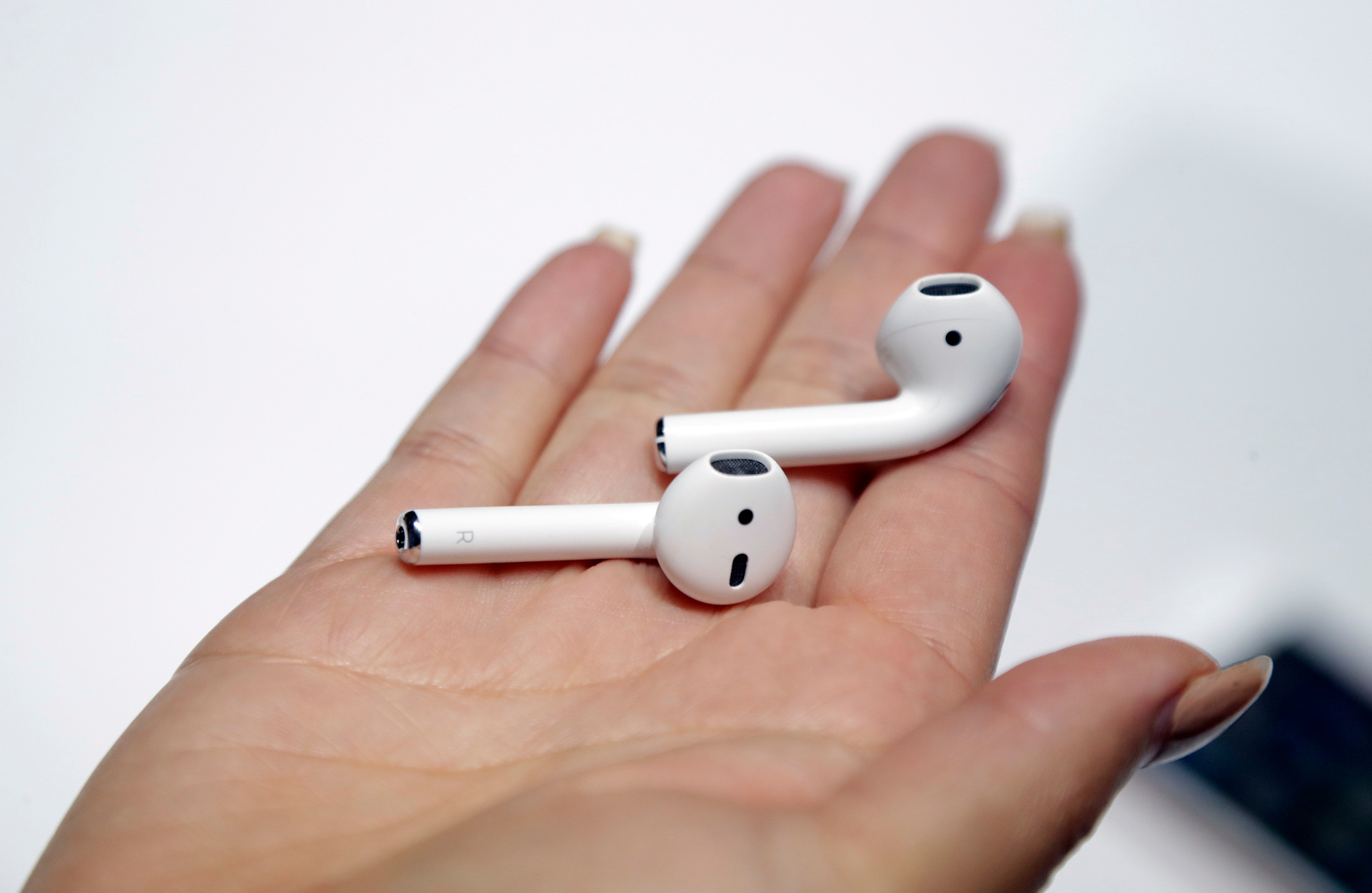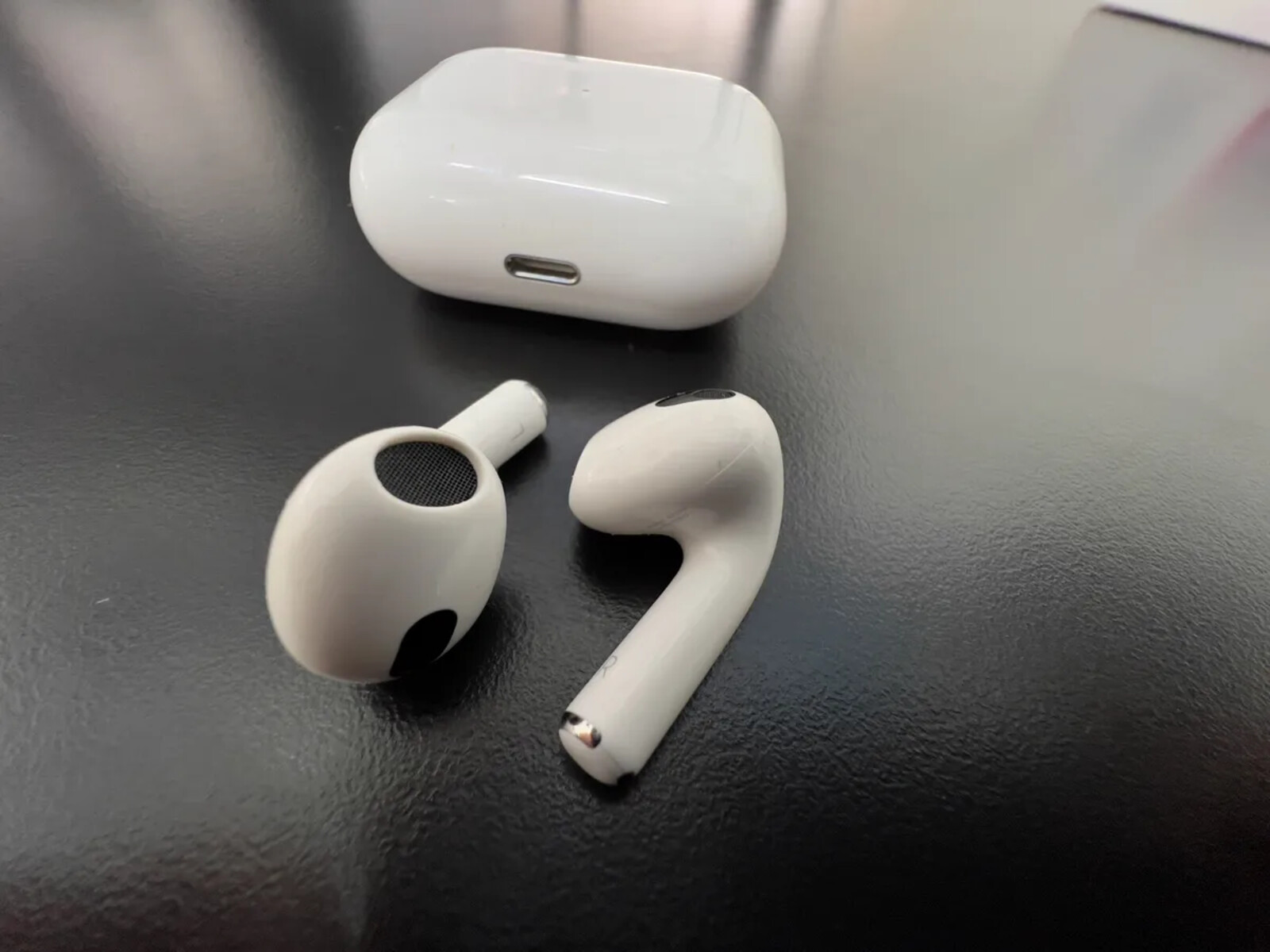Introduction
Airpods are a popular choice for wireless earphones, offering convenience and high-quality sound for everyday use. However, it can be frustrating when you can’t hear any audio through your Airpods. Whether you’re trying to listen to music, make a phone call, or watch a video, not being able to hear anything can put a damper on your experience.
If you find yourself in a situation where you can’t hear your Airpods, it’s essential to understand the possible reasons behind this issue. It could be a minor technical problem or a simple oversight in settings. In this article, we’ll explore some of the common reasons why you may not be able to hear your Airpods and provide practical solutions to resolve the problem.
Before diving into troubleshooting methods, let’s take a quick look at the basics of Airpods. Airpods are wireless earphones designed by Apple specifically for use with Apple devices. They utilize Bluetooth technology to connect to your iPhone, iPad, Apple Watch, or Mac, allowing you to enjoy a wireless listening experience. The Airpods feature touch-sensitive controls for playback and volume adjustments, as well as built-in microphones for phone calls and voice commands.
If you’re experiencing difficulties with your Airpods, stay tuned as we explore some troubleshooting steps to help you get back to enjoying your audio with ease. Whether it’s a connectivity issue or a software glitch, we’ll guide you through the process of resolving the problem. With some simple troubleshooting steps, you should be able to get your Airpods working and hear your favorite tunes, podcasts, and videos once again.
The Basics of Airpods
Airpods have gained immense popularity since their release, offering a seamless and wireless listening experience for Apple users. These sleek earphones are compact, lightweight, and packed with advanced technology. Understanding the basics of Airpods will help you make the most out of your audio experience.
One of the standout features of Airpods is their effortless pairing. With a simple tap, Airpods connect to your Apple device and are ready to use. They are designed to automatically connect to all your Apple devices that are signed in to the same iCloud account, making it convenient to switch between devices without any additional setup.
The Airpods come equipped with sensors that detect when you put them in your ears and automatically pause playback when you remove them. This feature ensures that you don’t miss a beat when you need to take a quick break or have a conversation.
Each Airpod has a small microphone, enabling easy hands-free calling and voice commands through Siri. With a double-tap or a customizable gesture, you can activate Siri and perform tasks like adjusting the volume, skipping tracks, or making a phone call, all without reaching for your device.
Furthermore, Airpods utilize advanced Bluetooth technology for a stable and reliable connection. The custom-designed Apple H1 chip allows for seamless pairing and significantly reduces latency, ensuring a lag-free audio experience. This technology also enables efficient power management, extending the battery life of the Airpods.
The Airpods case itself serves a dual purpose – it acts as a protective enclosure and a charging station. The case not only stores the Airpods when not in use but also provides additional battery life with its built-in rechargeable battery. Simply placing the Airpods in the case will automatically start the charging process, ensuring that they are ready to go whenever you need them.
Overall, the Airpods offer a convenient, wireless, and technologically advanced audio solution for Apple users. Whether you’re listening to music, making phone calls, or interacting with Siri, the Airpods deliver a seamless and immersive audio experience with their intuitive features and sleek design.
Possible Reasons for Not Hearing Your Airpods
There can be several possible reasons why you might not be able to hear any audio through your Airpods. Identifying the cause is crucial in order to find an appropriate solution. Here are some common reasons to consider:
- Improper audio output settings: Your device may be set to play audio through a different output, such as the internal speakers or another Bluetooth device. Make sure that your Airpods are selected as the audio output device in your device settings.
- Disconnection or poor connection: If your Airpods are not properly connected to your device or have a weak Bluetooth connection, you may experience audio issues. It’s important to ensure that your Airpods are securely paired and connected to your device.
- Volume settings: It’s possible that the volume on your Airpods or device may be turned down or muted. Check both the volume controls on your Airpods and your device to ensure they are set at an appropriate level.
- Dirty or clogged Airpods: Accumulated dirt, debris, or earwax can block the audio output of your Airpods, resulting in muffled or distorted sound. Regularly clean your Airpods to maintain optimal audio quality.
- Outdated software: If your Airpods or device software is not up-to-date, it can lead to compatibility issues and audio problems. Check for any available updates and install them to ensure compatibility and optimal performance.
- Software glitches: Like any electronic device, Airpods may experience software glitches that can affect their audio output. Restarting your device or resetting your Airpods can sometimes resolve these issues.
- Hardware or firmware issues: In rare cases, there may be hardware or firmware issues with your Airpods that require professional assistance. If none of the above solutions work, contacting Apple Support or visiting an Apple Store may be necessary.
By considering these possible reasons, you can troubleshoot the issue effectively and take appropriate steps to resolve it. Let’s move on to the next section, where we’ll provide practical solutions to help you fix the problem and start enjoying your Airpods once again.
Solutions to Fix the Issue
When you encounter the problem of not hearing any audio through your Airpods, there are several solutions you can try to resolve the issue. Here are some practical steps to help you fix the problem and get your Airpods working again:
- Check the audio output: Ensure that your device is set to play audio through the Airpods. Go to the audio settings on your device and select the Airpods as the output device.
- Make sure your Airpods are connected properly: Check that your Airpods are properly connected and paired with your device. Open the Bluetooth settings on your device and verify that the Airpods are connected. If not, follow the pairing process to connect them.
- Adjust the volume: Check the volume controls on both your Airpods and your device. Increase the volume gradually to ensure it is audible and not set too low or muted.
- Clean your Airpods: If you notice reduced or distorted sound, there may be debris or earwax blocking the audio output. Gently clean your Airpods using a soft, lint-free cloth or a small brush to remove any obstructions.
- Update your Airpods and device: Check for software updates for both your Airpods and your device. Keeping both up-to-date ensures compatibility and can often resolve audio issues. Follow the instructions to install any available updates.
- Reset your Airpods: If the above steps don’t solve the problem, you can try resetting your Airpods. Place your Airpods in the case, open the lid, and press and hold the setup button until the LED indicator flashes white. Then, reconnect your Airpods to your device.
- Contact Apple Support: If none of the previous steps work, it’s possible that there may be a hardware or firmware issue with your Airpods. In such cases, it’s recommended to contact Apple Support or visit an Apple Store for further assistance and guidance.
By following these solutions, you have a good chance of resolving the issue and restoring the audio output on your Airpods. Remember to carefully follow the instructions and test the audio after each step to identify the most effective solution for your particular situation.
Now that you are equipped with various troubleshooting techniques, let’s move on to the concluding section, where we will summarize the key points and offer some final thoughts.
Check the Audio Output
One of the first steps to take when you can’t hear any audio through your Airpods is to check the audio output settings on your device. Sometimes, your device may be set to play audio through a different output, such as the internal speakers or another Bluetooth device, causing you to not hear any sound through your Airpods.
To check the audio output settings on your iPhone, iPad, or iPod touch, follow these steps:
- Open the Settings app on your device.
- Scroll down and tap on “Bluetooth.”
- Under the “My Devices” section, locate your Airpods and tap on the (i) icon next to them.
- On the next screen, make sure that “Automatic Ear Detection” is enabled.
- Scroll down and tap on “Audio Routing.”
- Select “Automatic” or “Airpods” as the audio output.
If you’re using a Mac, you can check the audio output settings by following these steps:
- Click on the Apple menu in the top-left corner of your screen.
- Select “System Preferences.”
- Click on “Sound.”
- In the “Output” tab, select your Airpods from the list of available devices.
By ensuring that your Airpods are selected as the audio output device, you can effectively resolve the problem of not hearing any audio through your Airpods. If the issue persists, there may be other underlying factors causing the problem, and it’s advisable to proceed to the next troubleshooting step.
Now that we’ve explored the first solution, let’s move on to the next section where we will discuss how to make sure your Airpods are connected properly.
Make Sure Your Airpods Are Connected Properly
When you can’t hear any audio through your Airpods, it’s important to ensure that they are properly connected to your device. A weak or unstable Bluetooth connection can often cause issues with audio playback. Follow these steps to make sure your Airpods are connected properly:
- Open the Bluetooth settings on your device. On an iPhone, iPad, or iPod touch, go to Settings and tap on “Bluetooth.” On a Mac, click on the Bluetooth icon in the menu bar and select “Open Bluetooth Preferences.”
- Check if your Airpods are listed in the available devices. Ensure that their status is “Connected” or “Paired.” If they are not connected, proceed to the next step.
- If your Airpods are not listed, put them back in their case and close the lid.
- Wait a few seconds, then open the lid of the Airpods case.
- On your device, a popup should appear indicating that your Airpods are ready to connect. Follow the on-screen instructions to pair and connect the Airpods.
- If the popup does not appear, press and hold the setup button on the back of the Airpods case until the LED light on the front starts flashing white. Then, try connecting your Airpods again.
- Once your Airpods are connected, play audio or make a test call to check if you can hear the sound through them.
By ensuring that your Airpods are properly connected to your device, you can eliminate connectivity issues as a possible cause for not hearing any audio. If your Airpods are still not working, move on to the next troubleshooting step to further investigate and resolve the issue.
Now that we’ve covered how to check the audio output and ensure the proper connection of your Airpods, let’s move on to the next section, where we’ll discuss how to adjust the volume settings to resolve the issue.
Adjust the Volume
When you can’t hear any audio through your Airpods, it’s essential to check and adjust the volume settings. Sometimes, the volume may be set too low, muted, or controlled by a different device, resulting in no sound through your Airpods. Here’s what you can do to adjust the volume:
- On your device, locate the volume controls. On an iPhone, iPad, or iPod touch, these are usually located on the side of the device. On a Mac, you can adjust the volume using the dedicated keys on your keyboard or the volume slider in the menu bar.
- Increase the volume gradually using the volume up button or by sliding the volume slider to the right. Make sure it is at an appropriate level and not set too low.
- Check the volume controls on your Airpods as well. Double-tap on the left or right Airpod to activate the default action (usually Siri or Play/Pause). If the volume is low on the Airpods, use Siri or your device’s volume controls to adjust it.
- If you previously connected your Airpods to another device, ensure that the volume on that device is also turned up and not muted. In some cases, sound may be playing through the other device instead of your Airpods.
- Test the audio playback by playing a song, video, or making a test call to check if you can hear the sound properly through your Airpods.
By adjusting the volume settings on both your device and Airpods, you can resolve the issue of not hearing any audio. It’s essential to check and adjust the volume levels to ensure an optimal listening experience with your Airpods.
If adjusting the volume doesn’t solve the problem, move on to the next troubleshooting step to explore other possible causes and solutions.
Now that we’ve covered how to adjust the volume settings, let’s proceed to the next section, where we’ll discuss how to clean your Airpods to fix any potential audio issues.
Clean Your Airpods
Accumulated dirt, debris, or earwax can sometimes block the audio output of your Airpods, leading to muffled or distorted sound. Cleaning your Airpods regularly can help maintain optimal audio quality. Here’s how you can clean your Airpods:
- Remove your Airpods from their case and inspect them for any visible dirt or debris.
- Use a soft, lint-free cloth or a small brush to gently wipe or brush away any dirt or debris from the surfaces of the Airpods.
- Pay close attention to the speaker mesh on the Airpods, as this area is prone to accumulation of wax or debris. Use a soft brush or toothpick to carefully remove any buildup in the speaker mesh.
- You can also dampen the cloth slightly with water or isopropyl alcohol (70% concentration or lower) and gently wipe the surfaces of the Airpods to remove stubborn dirt or stains. Avoid getting any moisture into the openings of the Airpods.
- For the charging case, wipe the exterior with a soft cloth and use a small brush to clean the charging port if necessary.
- Allow the Airpods and the case to dry completely before placing the Airpods back into the case.
Regularly cleaning your Airpods helps to ensure clear and undistorted audio output. By removing any dirt or debris that may be blocking the sound, you can restore the full audio capabilities of your Airpods.
If cleaning your Airpods doesn’t resolve the audio issue, move on to the next troubleshooting step to further investigate and resolve the problem.
Now that we’ve covered how to clean your Airpods, let’s move on to the next section, where we’ll discuss the importance of updating your Airpods and device software.
Update Your Airpods and Device
Keeping your Airpods and device software up-to-date is crucial for optimal performance and compatibility. Outdated software can sometimes lead to audio issues or connectivity problems with your Airpods. To ensure that you are using the latest firmware and software versions, follow these steps:
- Check for Airpods firmware updates: Connect your Airpods to your device and ensure they are paired. Place your Airpods in the charging case and connect it to a power source. Connect your device to Wi-Fi and open the “Settings” app. Tap on “General” and then “About.” Look for your Airpods in the list of devices and check for any available firmware updates. If an update is available, follow the on-screen instructions to install it.
- Check for device software updates: Open the “Settings” app on your device and go to “General.” Tap on “Software Update” and check for any available updates for your device’s operating system. If an update is available, follow the prompts to download and install the update.
- Restart your device: After updating your device’s software, it’s a good idea to restart your device. This can help ensure that any software changes are applied effectively.
By updating both your Airpods and device software, you can address any potential audio-related bugs or compatibility issues. Keeping your software up-to-date is essential for maintaining optimal performance and resolving any audio problems you may encounter.
If updating your Airpods and device software doesn’t fix the issue, proceed to the next troubleshooting step to further investigate and resolve the problem.
Now that we’ve covered how to update your Airpods and device software, let’s move on to the next section, where we’ll discuss how to reset your Airpods as a potential solution.
Reset Your Airpods
If you’ve tried the previous solutions and are still unable to hear any audio through your Airpods, resetting them can help resolve potential software or connectivity issues. Here’s how to reset your Airpods:
- Place both of your Airpods in the charging case and close the lid.
- Wait for about 30 seconds to ensure the Airpods are completely powered off.
- Open the lid of the charging case.
- On the back of the case, you’ll find a small setup button. Press and hold this button until the LED light on the front of the case starts flashing white.
- Once the LED light starts flashing, release the setup button.
- On your device, go to the Bluetooth settings and forget the Airpods from the list of connected devices.
- Close the Bluetooth settings and place your Airpods back in the charging case.
- Re-pair your Airpods with your device by following the initial setup process. Open the lid of the charging case, hold it near your device, and follow the prompts that appear on your device’s screen.
Resetting your Airpods can help clear any software glitches or connectivity issues that might be affecting the audio output. After resetting, you can reconnect your Airpods to your device and test the audio to see if the problem has been resolved.
If resetting your Airpods doesn’t solve the issue, continue to the next troubleshooting step or consider reaching out to Apple Support for further assistance.
Now that we’ve covered how to reset your Airpods, let’s move on to the final section, where we’ll discuss when it might be necessary to contact Apple Support.
Contact Apple Support
If you’ve tried all the previous troubleshooting steps and are still unable to hear any audio through your Airpods, it may be time to reach out to Apple Support for further assistance. Apple’s support team is trained to handle any issues you may encounter with your Airpods and can provide customized solutions based on your specific situation.
Before contacting Apple Support, make sure you have the following information handy:
- Serial numbers of your Airpods, which can be found on the inside of the charging case.
- Details of the problem you’re experiencing, such as when it started, any specific error messages, or any troubleshooting steps you’ve already tried.
- Information about your device, including the model, operating system version, and any recent software updates.
To contact Apple Support, you have a few different options:
- Visit the Apple Support website and initiate a chat session with a support representative.
- Schedule a callback from Apple Support, where a representative will call you at a convenient time.
- Book an appointment at an Apple Store or an authorized service provider to receive in-person assistance.
Apple’s support team will guide you through additional troubleshooting steps and determine whether further repairs or replacements are necessary for your Airpods. They have the expertise to handle more complex issues and can provide expert advice to help you resolve the problem.
Remember, Apple Support is there to assist you, so don’t hesitate to reach out to them if you’ve exhausted all other options and are still experiencing issues with your Airpods.
Now that we’ve covered how to contact Apple Support, let’s conclude this article by summarizing the key points we’ve discussed and offering some final thoughts.
Conclusion
When you can’t hear any audio through your Airpods, it can be frustrating. However, by troubleshooting and following the steps we’ve discussed, you can often resolve the issue and get your Airpods working again. Let’s recap the key points we’ve covered:
We started by understanding the basics of Airpods and their features, including seamless pairing, automatic ear detection, and touch controls. Then, we explored the possible reasons for not hearing audio through your Airpods, such as improper audio output settings, poor connectivity, low volume, dirty Airpods, outdated software, software glitches, and hardware or firmware issues.
To fix the issue, we provided practical solutions, including checking the audio output settings, ensuring proper connectivity, adjusting the volume, cleaning your Airpods, updating your Airpods and device software, resetting your Airpods, and contacting Apple Support if necessary.
Remember to always check the audio output settings, ensure proper connection, and adjust the volume before proceeding with any other troubleshooting step. Regularly cleaning your Airpods can help maintain optimal audio quality. Keeping your Airpods and device software up-to-date is essential for performance and compatibility. Resetting your Airpods can resolve software or connectivity issues. Finally, if all else fails, don’t hesitate to contact Apple Support for further assistance.
We hope that by following these troubleshooting steps, you were able to resolve any audio issues with your Airpods and restore the excellent sound quality they offer. Enjoy your wireless listening experience, whether it’s listening to music, watching movies, or making calls, with your fully functional Airpods.







